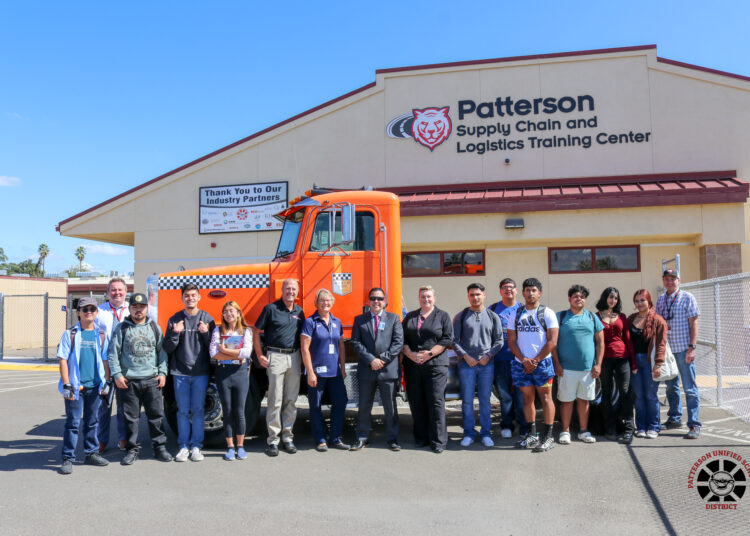The Next Generation in Trucking Association is using a recently awarded grant to expand a driver training program for high schoolers beyond its California roots.
Co-founder and President Lindsey Trent said Next Generation in Trucking earlier this month was awarded a $127,000 grant from Knorr-Bremse Global Care North America. The foundation is operated by Germany’s Knorr-Bremse, which owns U.S.-based brake manufacturer Bendix.
“With this funding, we will be able to establish a standardized curriculum for training the next generation of truck drivers. We are committed to setting the bar high for training, ensuring that new drivers are well-prepared for the challenges of the industry,” Next Generation said in a prepared statement.
“I read an article about how Knorr-Bremse supported a high school program in a local community in Ohio, because that’s where Bendix is headquartered,” Trent said. “I decided to reach out to them because it seems like they care about education.”
When Trent did contact Knorr-Bremse, the foundation suggested that Next Generation apply for a grant. “The purpose of the foundation is quality education, which obviously fits right along with what we’re trying to do to build trucking programs in high schools,” she said.
The basics of the curriculum were already put in place by Next Generation co-founder Dave Dein, the truck driving program coordinator and instructor at the Patterson High School Supply Chain and Logistics Training Center in Patterson, California.
Dein developed the truck driver training program, which does not put anybody behind the wheel of an actual tractor, about six years ago, Trent said. The work he has done will be developed into a formal curriculum that can be offered to the vocational programs of regional and local school systems across the country.
With the grant money, Next Generation has been able to hire the Education Development Center (EDC) to write a more formal curriculum based on Dein’s work. The Boston-based nonprofit says on its website that it “advances lasting solutions to the most pressing educational, health, and workforce challenges across the globe.”
By having that curriculum professionally written, “it makes it easier for a school in Minnesota that says, ‘We want to add a training course,’” Trent said. “Then we will give them the curriculum and it will be able to be more easily adopted.”
Next Generation also has brought in five trucking “subject matter experts,” as Trent called them, who will be working with EDC on the curriculum. The project is expected to be completed by September.
As Next Generation envisions the program, it would begin at the start of the school year. The truck driving program would involve students “being in the classroom every day,” Trent said.
And while there won’t be time behind the wheel of an actual truck, “it will be classroom instruction in all the standards that drivers need to learn,” she said.
Trent ticked off some of the things that a student might learn in the class: “teaching proper body movement to reduce injuries, how to get in and out of the cab, how to properly use a dolly.”
But health also is part of the focus. “We are teaching people how to be healthy on the road,” Trent said. “One of the biggest problems in trucking is the sedentary lifestyle.” Making healthy food choices while on the road would be taught, as well as “how to stay mentally healthy.”
Although what Trent referred to as “the skill of driving” won’t be taught, there are other aspects to being a driver that the program teaches, such as “how are you interacting with the customer. Those are soft skills that are needed in professional drivers.”
But Dein’s program does involve using truck simulators that mimic the experience of driving a truck. Students will be “getting that training without the pressure of being out on the road,” Trent said.
She said Dein recently received a letter from a former student who went on to become a professional truck driver and had a blowout that he steered himself through thanks to lessons he had learned on the stimulator. “So this young driver knew exactly what to do when the tire blew.”
The post-graduation path would be for a student to use his or her education to help get a commercial learner’s permit, Trent said, armed with the knowledge learned in the curriculum. The Federal Motor Carrier Safety Administration said the permit involves passing knowledge tests, as well as meeting several other criteria.
With the permit secured, a student can then enroll in any one of the various educational programs designed to earn a CDL, such as at a community college or private driving school.
She conceded that the pathway is “a long training process, but we know it is not just any 18-year-old. We’re looking for a special candidate that would be a special fit.”
Trent said Next Generation has met with numerous schools interested in the program, as well as such organizations as the Future Farmers of America. “The schools are coming to us, wanting to start the program.”
And with the curriculum in place, that barrier of having the tools needed to start a driver training program will be lifted.
More articles by John Kingston
Drilling Deep: Getting young people into trucking nice and early
State of Freight for March: Bullish signs amid mostly bearish news
Decline in truck transportation jobs 2nd biggest in last decade
The post Next Generation in Trucking expanding driver training for high schoolers appeared first on FreightWaves.













